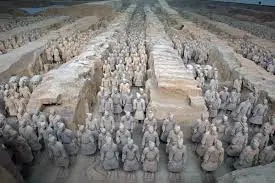Archaeology has always played a key role in uncovering the mysteries of our past. In the 21st century, new technologies and methods have led to some incredible discoveries. These finds have not only enriched our understanding of history but also revealed fascinating insights into ancient cultures. Let’s dive into the top 10 most significant archaeological excavations of the 21st century.
1. The Tomb of the Warrior King, Greece (2015)
In 2015, archaeologists in Greece discovered the untouched tomb of a Mycenaean warrior, dating back to around 1450 BCE. This tomb, known as the “Griffin Warrior,” contained a wealth of artifacts, including gold jewelry, weapons, and an intricately carved seal stone. This excavation shed light on Mycenaean culture and its connections with Minoan Crete.
2. The Antikythera Shipwreck, Greece (2000s)
The ongoing exploration of the Antikythera shipwreck off the coast of Greece has revealed a treasure trove of ancient artifacts. Among these finds is the Antikythera mechanism, an ancient analog computer used to predict astronomical positions. The excavation has provided invaluable information on ancient Greek technology and seafaring.
3. Göbekli Tepe, Turkey (Early 2000s)
Although discovered in the 1990s, the excavation of Göbekli Tepe has continued to astonish archaeologists into the 21st century. This ancient site, believed to be around 12,000 years old, features massive stone pillars arranged in circles. It is considered one of the earliest examples of monumental architecture, predating Stonehenge by several thousand years.
4. The Roman Villa of the Antonines, Italy (2000s)
Excavations at the Villa of the Antonines near Rome have uncovered a large and luxurious Roman estate, complete with intricate mosaics and frescoes. This site has provided insights into Roman domestic life and art, as well as the lifestyle of the elite during the Roman Empire.
5. The Terracotta Warriors Pit 1, China (2009)
In 2009, archaeologists resumed work on Pit 1 at the famous Terracotta Army site in Xi’an, China. This excavation led to the discovery of hundreds of new warrior statues, each with unique facial features and armor. The site continues to offer a wealth of information about the Qin Dynasty and its military practices.
6. The Lost City of Tenea, Greece (2018)
In 2018, archaeologists announced the discovery of the ancient city of Tenea, which had been lost for centuries. The site dates back to the 4th century BCE and was mentioned in Greek mythology. Excavations revealed buildings, pottery, and coins, offering a glimpse into the daily life of this once-thriving city.
7. The Maya ‘Mega-Metropolis’, Guatemala (2018)
Using advanced laser scanning technology (LiDAR), researchers uncovered a vast network of ancient Maya cities hidden beneath the jungles of Guatemala. This “mega-metropolis” includes over 60,000 structures, such as palaces, roads, and fortifications. This discovery has significantly expanded our understanding of Maya civilization and its complexity.
8. The Neolithic Settlement of Çatalhöyük, Turkey (2000s)
Excavations at Çatalhöyük have continued into the 21st century, providing new insights into one of the world’s oldest urban centers. Dating back to 7500 BCE, this Neolithic settlement has revealed evidence of early farming, art, and complex social structures. The site offers a unique look at early human communities and their development.
9. The Ancient Egyptian ‘Lost Golden City’, Egypt (2021)
In 2021, archaeologists discovered a large, well-preserved city near Luxor, dating back to the reign of Pharaoh Amenhotep III (circa 1391-1353 BCE). Dubbed the “Lost Golden City,” the site includes residential and industrial areas, giving a rare glimpse into daily life during a prosperous period in ancient Egypt.
10. The Anglo-Saxon Cemetery at Prittlewell, UK (2003)
The excavation of a richly furnished Anglo-Saxon burial chamber in Prittlewell, Essex, has been hailed as one of the most important early medieval discoveries in the UK. The burial site dates back to the 7th century and contained an array of artifacts, including gold crosses, a lyre, and an iron folding stool, indicating the high status of the individual buried there.
The Impact of These Discoveries
These archaeological excavations have deepened our understanding of human history, revealing the complexities of ancient societies and their interactions. Each find has added a new chapter to the story of humanity, showing us that even in the 21st century, there are still countless secrets waiting to be uncovered.
By studying these sites, archaeologists continue to piece together the puzzles of our past, ensuring that the knowledge and achievements of ancient civilizations are not forgotten. These excavations remind us of the rich tapestry of human history and the importance of preserving it for future generations.
